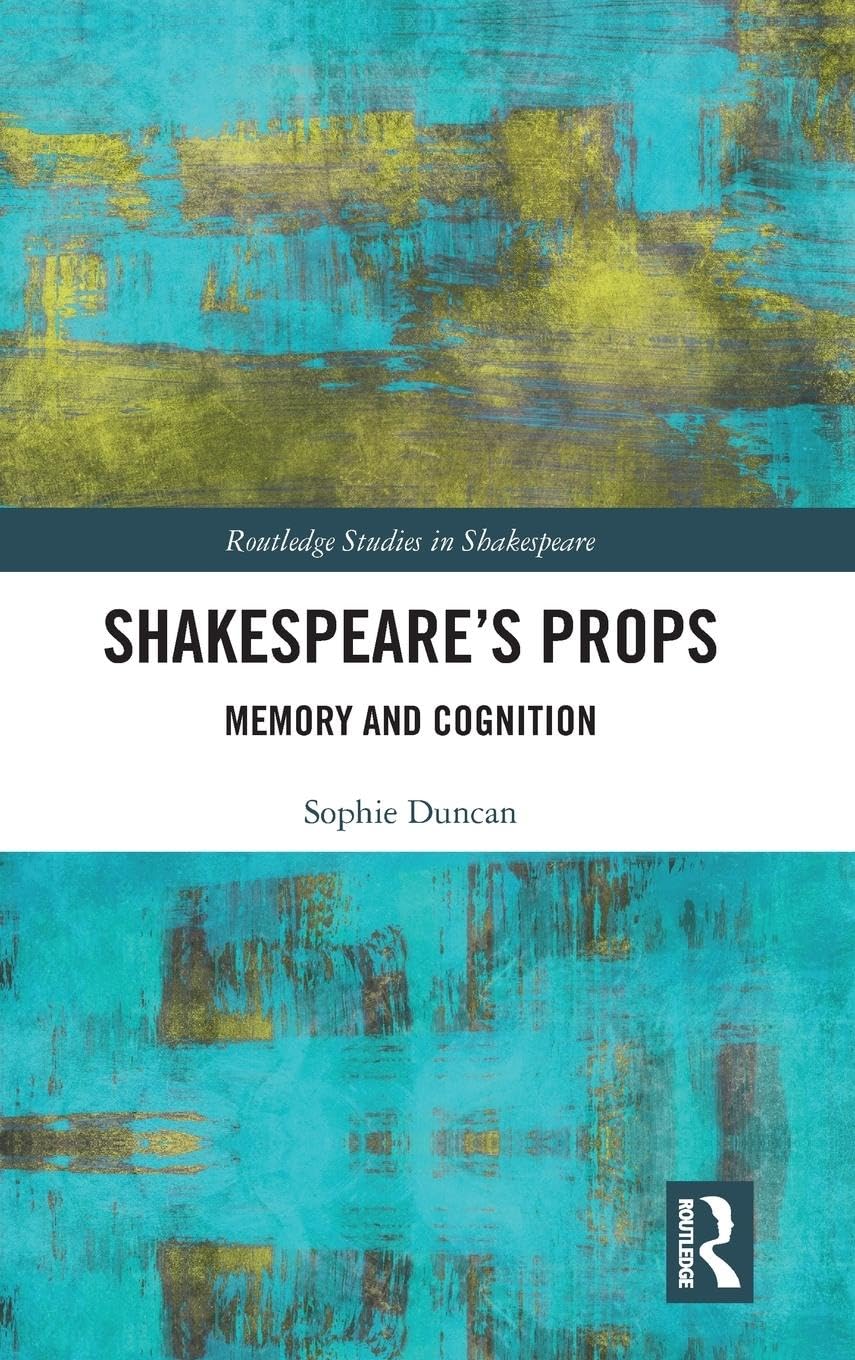Shakespeare’s Props: Memory and Cognition (Routledge Studies in Shakespeare)
Shakespeare’s Props: Memory and Cognition (Routledge Studies in Shakespeare) is backordered and will ship as soon as it is back in stock.
Couldn't load pickup availability
Genuine Products Guarantee
Genuine Products Guarantee
We guarantee 100% genuine products, and if proven otherwise, we will compensate you with 10 times the product's cost.
Delivery and Shipping
Delivery and Shipping
Products are generally ready for dispatch within 1 day and typically reach you in 3 to 5 days.
Book Details
-
Title: Shakespeare’s Props and the Cognitive Impact of Stage Properties
-
Author: Sophie Duncan
-
Brand: Routledge
-
Edition: 1st Edition
-
Binding: Hardcover
-
Number of Pages: 278
-
Release Date: 29-01-2019
-
EAN: 9781138291225
-
Package Dimensions: 9.3 x 6.3 x 0.8 inches
-
Languages: English
Summary:
In Shakespeare’s Props and the Cognitive Impact of Stage Properties, Sophie Duncan presents the first full-length study of the role that props play in Shakespeare’s works from a cognitive perspective. While props like the strawberry-spotted handkerchief in Othello and the skull in Hamlet have become iconic symbols that immediately evoke the plays, Duncan argues that props should not be viewed merely as static or symbolic objects. Instead, she redefines them as "detachable parts of the mind," offering a fresh reading of how props function cognitively within Shakespeare’s plays.
The monograph delves into how Shakespeare's characters use props to project, reveal, and intervene in each other's thought processes, deepening the emotional and cognitive experience for both the characters and the audience. From memory manipulation in Hamlet to the cultural dynamics of gift-giving in Othello, Duncan’s analysis opens new perspectives on cognition, recollection, and the relationship between memory and objects during the Renaissance. She highlights how props are more than physical objects—they are volatile extensions of character psychology that can be manipulated and read for their affective power.
The book also situates Shakespeare’s exploration of props within the context of early modern culture’s rethinking of memory and objecthood, driven by the rise of printing. By examining how props carry cultural memories, accrue significance, or fade into stage detritus, Duncan sheds new light on how Shakespeare used material objects to shape and intensify human cognition and emotion in his plays.





